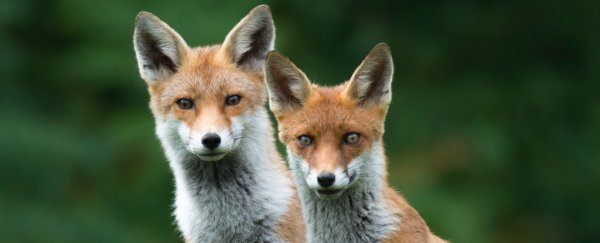Protected areas will only help species migrating to escape a warming climate if enough of them, strategically located, allow for reproduction, a study of the English countryside showed Wednesday.
With humanity's numbers set to pass 9 billion by mid-century, many animals and plants on our crowded planet are severely threatened by shrinking habitat.
Carving out nature preserves is essential for their long-term survival, experts say.
But a new study (link not yet live) published by the Royal Society concludes that species in Britain seeking to adapt to climate change through migration could fail because some strategically located breeding habitats across the country remain unprotected.
From butterflies to birds, study co-lead author Tom Travers says the findings apply to thousands of species of plants, animals, and even bacteria.
"There's so much evidence that this movement is happening with so many species," he told AFP.
"It's likely that more species are needing to move than aren't."
Researchers led by Travers measured which habitats across the British countryside – even if they are not joined up – could provide crucial links for populations on the move.
"Patches [of land] our method identifies as being important to connectivity are not currently protected," Travers said.
"This leaves species that use those habitats vulnerable under climate change."
Movement over generations
As the climate warms, animals and plants are likely to adapt by migrating northward over generations.
To determine which areas were crucial for that movement, the scientists imagined a map as if it showed electric current flowing from south to north.
Habitats were only considered to provide "connectivity" if they consist of lands that a species' offspring could reach and settle on long enough to reproduce.
"Where would offspring produced from those patches be able to reach in the next generation?", explained Travers.
Researchers modeled networks for 16 types of habitats, including deciduous woodlands, mudflats, and lowland meadows.
Some habitats – like maritime cliffs and coastal sand dunes – were too broken up or spread out to be included.
Some key areas for facilitating south-north movement, the researchers found, were not adequately protected under current standards.
But the study says if done strategically, expanding protected areas by only 10 percent would enhance functional "connectivity" by more than 40 percent.
In some cases, these critical "stepping stone" habitats were less than one square kilometer (0.4 square miles).
Increasing both the size and quality of nature preserves has moved up the global agenda amid signs of a biodiversity crisis.
Nearly 30 percent of species cataloged on the International Union for the Conservation of Nature (IUCN) Red List are threatened with extinction.
A draft agreement under negotiation ahead of a UN biodiversity summit in China next spring has called for designating 30 percent of land and ocean surface as protected within a decade.
"Our research is quite timely, because it highlights that long-distance connectivity hasn't been properly considered in past protection decisions," said Travers.
